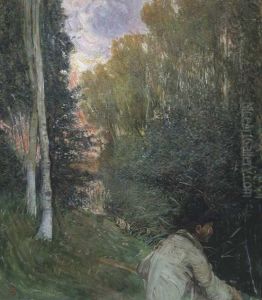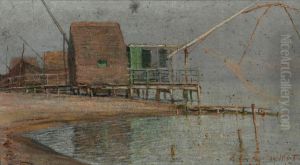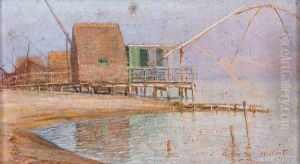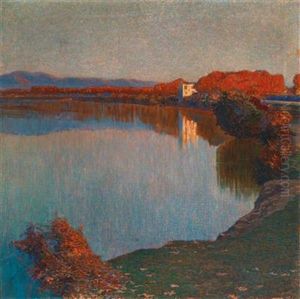Guglielmo Amedeo Lori Paintings
Guglielmo Amedeo Lori was an Italian painter and engraver, known primarily for his contributions to the Italian art scene in the early to mid-20th century. Born in 1885 in the vibrant and historically rich city of Florence, Italy, Lori grew up in an environment steeped in the legacy of the Renaissance, which undoubtedly influenced his artistic direction and development. Despite the lack of extensive documentation on his early life, it is clear that Lori was deeply immersed in the artistic culture of his time, absorbing the techniques and inspirations that would later define his work.
Lori's artistic career spanned several decades, during which he explored various styles and mediums. He was particularly known for his skill in engraving and printmaking, alongside his work in painting. His art evolved over the years, reflecting the changes in artistic movements and the tumultuous times Italy went through, including both World Wars. However, Lori managed to maintain a distinctive style that emphasized the beauty of the Italian landscape and the human figure, often imbued with a sense of tranquility and timeless elegance.
Throughout his career, Guglielmo Amedeo Lori participated in numerous exhibitions, both nationally and internationally, gaining recognition for his artistic achievements. His works were appreciated for their technical precision as well as their emotional depth, capturing the essence of his subjects with a delicate yet impactful touch. Despite this, Lori remained somewhat of an enigmatic figure, with a modest level of fame that belied the quality and significance of his contributions to the art world.
Guglielmo Amedeo Lori passed away in 1971, leaving behind a legacy that, while not as widely recognized as some of his contemporaries, continues to be appreciated by art historians and collectors. His works are held in various collections and museums, serving as a testament to his skill and artistic vision. Lori's life and career exemplify the journey of an artist who, despite the changing tides of time and taste, remained true to his vision, contributing quietly but significantly to the rich tapestry of Italian art.




